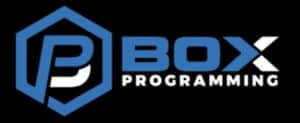I’m sure at one time or another, you’ve thought about recycling programming that you’ve already used. Maybe it was from last year, or a few months ago, but there is a long list of reasons why you should NOT consider re-using the same material. Of course, retesting benchmark pieces is important, and we aren’t urging you to not repeat “testing pieces”, but what we are doing is urging you to never fall into the trap of using material from the past. Here’s why:
- Progression: Programming is constantly evolving; not just the programming itself, but also how you plan your 60 minute class, and how your structure the plan to prepare your athletes in the most efficient way possible. Louie Simmons often gets asked why he changed his parameters for his athletes’ training, such as performing 5 sets of 5 reps with dynamic effort work, even though for years they only performed 12 sets of 2 in order to maintain bar-speed. Louie’s response is, “Do you want to drive the same car forever!? No, you want a new car eventually.” The same goes for programming; we want to always be improving our process, even if it’s something small like distribution of volume.
- New Information: We are CONSTANTLY receiving valuable information and data as to what works and what does not. If you’re in the trenches with your own programming testing pieces (as you should be), then you may see that a piece which looks great on paper may not go as planned when you actually test it. We must always be open-minded to feedback and take note of how things actually play out in our classes.
- New Education: One of the most important aspects of evolving in any job is constantly learning and applying new knowledge. Reading everyday is important, but much like point #2, we must actively apply what we read to ensure things play out correctly. The more information we take in, the more likely we are to improve our processes and ability to give our clients the most up-to-date programming.
- Change: With time comes change. I can honestly say my program design from the last year (or even 6 months ago) looks different than it does today. The core values remain the same but the context is constantly varied. It’s possible to use pieces from old plans, but we should always be looking for ways to refine our system. To give you an example, our program design today includes significantly more upper-body pulling, specifically in the transverse plane, than it did last year, based off of experimenting/testing we have done. Our programming also includes much more streamline warm-ups that flow into activation/mobilization methods than it did last year, as well as training notes to efficiently brief our athletes without confusing them.
- Laziness: Considering all of the above, it’s safe to assume that your most recent product is your best product (I know this to be 100% true with my own program design) and simply putting out material you created from the past does not take into account your increased knowledge and ability to refine your system.
Overall, it’s crucial to ALWAYS be looking for an edge with program design. Everything in life evolves and as our programming and our athletes evolve, how we administer the proper doses of training must also evolve to avoid stagnation, overtraining, and keeping our athletes engaged. Don’t get caught in the trap of simply using your “old work” as a means of saving time, as this is the easy way out. You certainly would not want your coach to just recycle what they gave you 6 months ago, would you? If you wouldn’t expect that, then your clients should not either.


